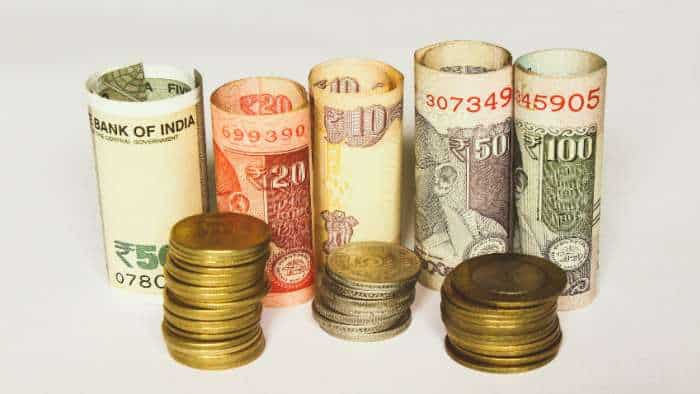Discussions are on for further Moon-landing missions, says ISRO Chairman
The Indian Space Research Organisation is almost ready with XPoSat (X-ray Polarimeter Satellite), the country's first dedicated polarimetry mission to study various dynamics of bright astronomical X-ray sources in extreme conditions, Chairman Somanath S said on Thursday.
)
The Indian Space Research Organisation is almost ready with XPoSat (X-ray Polarimeter Satellite), the country's first dedicated polarimetry mission to study various dynamics of bright astronomical X-ray sources in extreme conditions, Chairman Somanath S said on Thursday.
He said preparations are underway for the Aditya-L1 mission to study the Sun, adding that discussions are on to create a satellite to study extrasolar planets (exoplanets) as well.
"We are also discussing missions to the Moon further for landing," the ISRO chief, who is also the Secretary of the Department of Space, said in his inaugural address to the Space Science Technology & AwaReness Training (START) programme 2023, being held virtually.
ISRO launched the Chandrayaan-3 mission to the Moon on July 14.
"I am sure that you will find something very substantial through this (Chandrayaan-3) mission as far as science is concerned," he said.
"We are also preparing for the mission to understand and study the Sun through this Aditya-L1 mission, and the X-ray polarimeter satellite is almost ready and we are hoping for its launch to understand stars better," Somanath said.
He said discussions are on regarding missions to understand other planetary objects like Venus, and on how to create a satellite to study extrasolar planets (planets outside the solar system).
Also Read: Chandrayaan 3 launch: A timeline of Chandrayaan missions undertaken by ISRO
According to ISRO officials, the national space agency headquartered here, the XPoSat will carry two scientific payloads in a low earth orbit.
The primary payload POLIX (Polarimeter Instrument in X-rays) will measure the polarimetry parameters (degree and angle of polarization) in medium X-ray energy range of 8-30 keV photons of astronomical origin.
The XSPECT (X-ray Spectroscopy and Timing) payload will give spectroscopic information in the energy range of 0.8-15 keV, they said. Aditya L1 will be the first space based Indian mission to study the Sun.
The spacecraft is planned to be placed in a halo orbit around the Lagrange point 1 (L1) of the Sun-Earth system, which is about 1.5 million km from Earth.
A satellite placed in the halo orbit around the L1 point has the major advantage of continuously viewing the Sun without any occultation/eclipses. This will provide a greater advantage of observing the solar activities and its effect on space weather in real time, according to ISRO.
Also Read: Gaganyaan Human spaceflight mission: ISRO successfully tests service module propulsion system
The spacecraft carries seven payloads to observe the photosphere, chromosphere and the outermost layers of the Sun (the corona) using electromagnetic and particle and magnetic field detectors, the space agency said.
Using the special vantage point L1, four payloads directly view the Sun and the remaining three payloads carry out in-situ studies of particles and fields at the Lagrange point L1, thus providing important scientific studies of the propagatory effect of solar dynamics in the interplanetary medium.
Catch latest stock market updates here. For all other news related to business, politics, tech, sports and auto, visit Zeebiz.com.
Get Latest Business News, Stock Market Updates and Videos; Check your tax outgo through Income Tax Calculator and save money through our Personal Finance coverage. Check Business Breaking News Live on Zee Business Twitter and Facebook. Subscribe on YouTube.
RECOMMENDED STORIES

Top 7 Flexi Cap Mutual Funds With up to 52% SIP Return in 1 Year: Rs 20,000 monthly SIP investment in No. 1 fund has generated Rs 3.02 lakh; know about others too

Rs 55 lakh Home Loan vs Rs 55 lakh SIP investment: Which can be faster route to arrange money for Rs 61 lakh home? Know here
03:29 PM IST









 ISRO's PSLV-XL rocket to launch ESA's Proba-3 mission on Wednesday
ISRO's PSLV-XL rocket to launch ESA's Proba-3 mission on Wednesday SpaceX successfully launches ISRO's 4,700 kg communication satellite from US
SpaceX successfully launches ISRO's 4,700 kg communication satellite from US ISRO releases Chandrayaan-3 scientific data for global researchers
ISRO releases Chandrayaan-3 scientific data for global researchers  "Investments made in space programme have benefited society," says ISRO Chairman Dr S Somnath
"Investments made in space programme have benefited society," says ISRO Chairman Dr S Somnath ISRO launches Earth Observation Satellite-8 from Sriharikota
ISRO launches Earth Observation Satellite-8 from Sriharikota